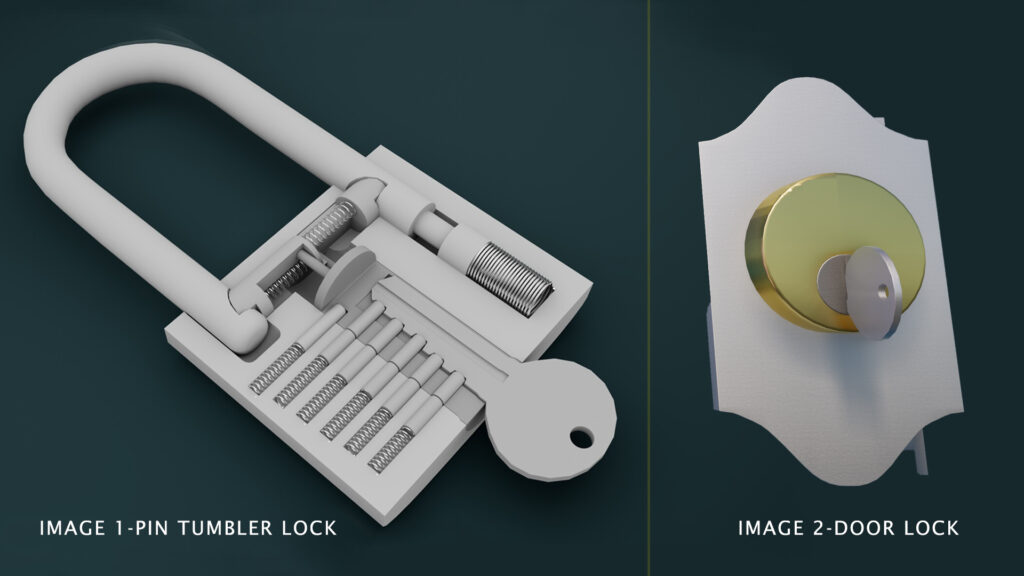
How Does a Lock Work? Pin Tumbler Lock….
Have you ever wondered how the locks on our doors actually work? Or how the Pin Tumbler Lock shown (Image 1) functions? Or how a single key can open one lock but not another? In this blog, we’ll explore the mechanism behind two of the most common lock systems with the help of 3D animation and cross-sectional views. We’ll also look at how secure they really are—and how easily someone might break in using simple tools.
At the end of this blog, you can watch our full 3D animation on YouTube for a complete visual explanation of how a pin tumbler lock works.
The First Lock in History- Wooden Pin Lock
Did you know the first lock system was invented over 4,000 years ago in ancient Egypt? It was made entirely of wood and is considered the world’s first pin lock. This ancient invention was a remarkable example of early human ingenuity and craftsmanship, showing that even thousands of years ago, people were concerned with security and privacy. Archaeologists have discovered these locks in tombs and ancient homes, indicating that protecting valuables and personal spaces was important even in early Egyptian society.
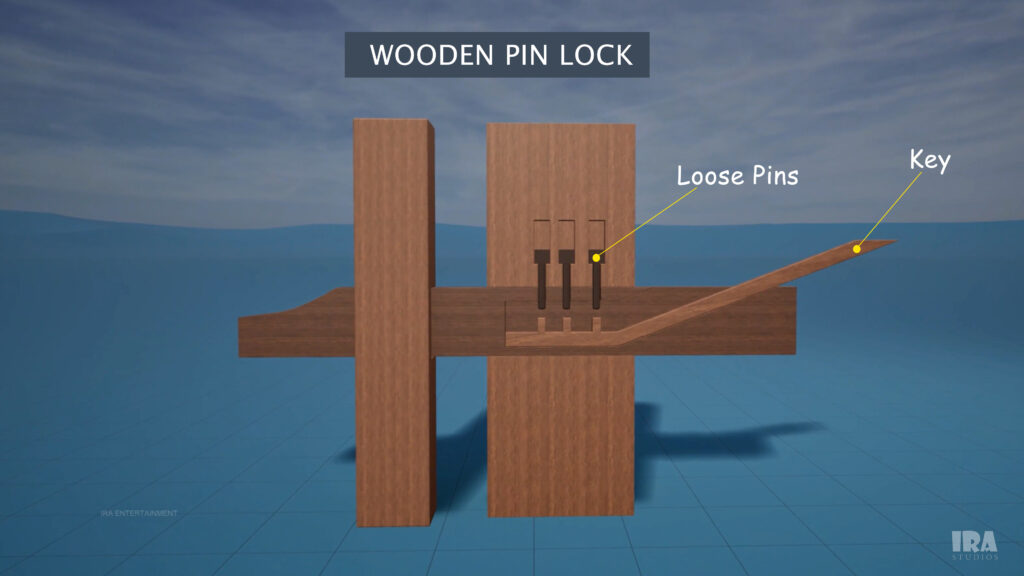
Here’s how it worked:
A wooden key was inserted into a wooden lock system. This key was carefully carved by hand, often customized to fit only one specific lock, making it highly secure for its time.
Inside, there were three small pins that would fall into place when locked. These pins acted as a barrier to prevent the lock from opening without the correct key, demonstrating a basic understanding of mechanical security.
The wooden key had specially designed notches that lifted these pins when inserted, unlocking the mechanism. Each notch had to perfectly match the position of the pins, which meant that the lock could not be easily bypassed by random objects.
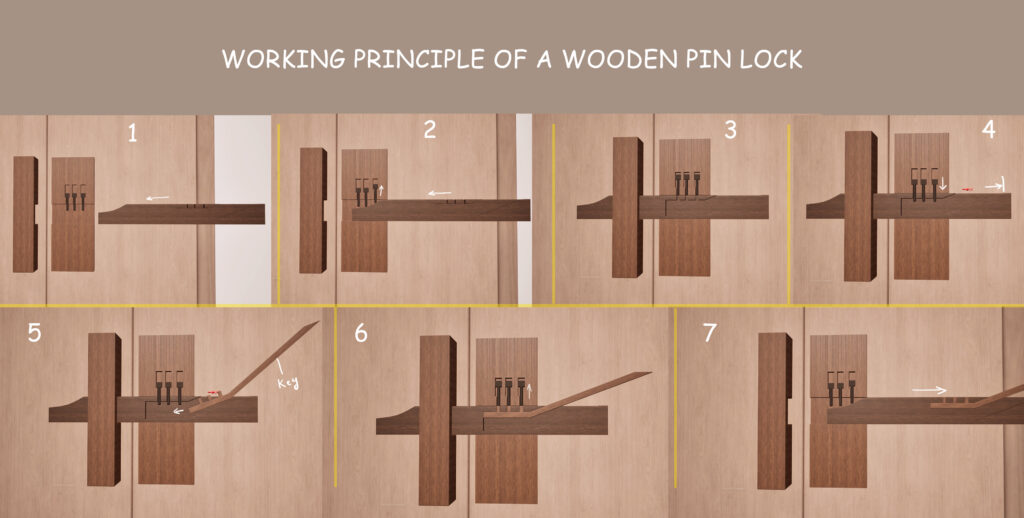
It was simple, powerful, and the beginning of what we now call the pin tumbler system. This wooden pin lock laid the foundation for modern locks, influencing designs that are still in use in today’s sophisticated security systems. Its principles were so effective that the basic mechanism has survived and evolved over millennia, proving that clever engineering never goes out of style.
Understanding the Modern Pin Tumbler Lock
Today, the pin tumbler lock remains one of the most widely used types of locks in homes, offices, and even commercial buildings. Its popularity comes from a perfect balance of affordability, reliability, and ease of manufacturing. Despite being centuries old in concept, the pin tumbler lock has proven its durability and adaptability, evolving to meet modern security needs.
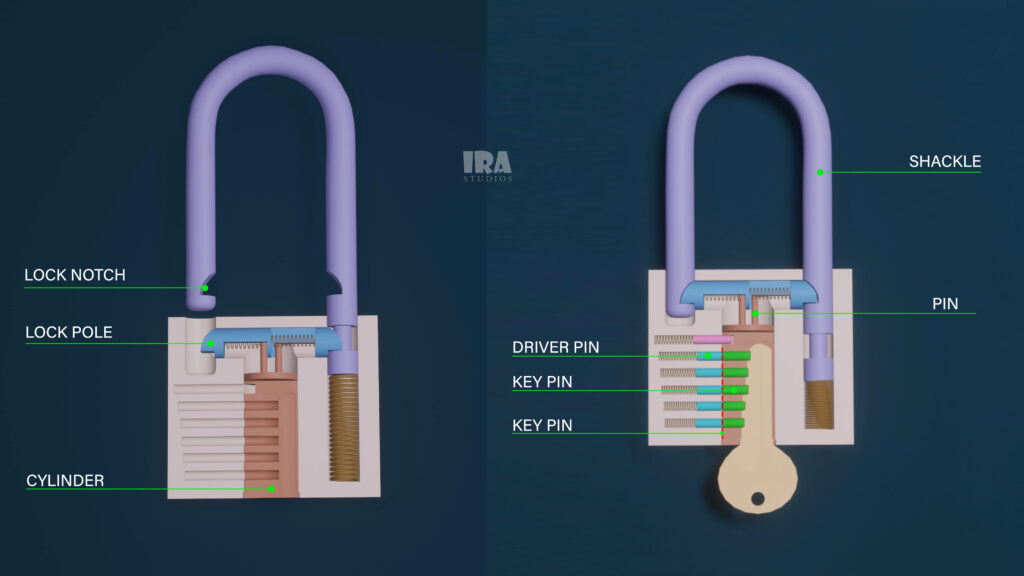
Let’s break down the parts using a 3D cross-sectional view:
Shackle: This is the U-shaped part you see on top of padlocks. It’s typically made from strong steel alloys or hardened metals to resist cutting or sawing. The shackle is the visible element that secures the lock to a door, gate, or locker, and its strength is crucial for overall security.
Locking Pins: These spring-loaded pins are the heart of the locking mechanism. They interact with the key to keep the shackle or bolt securely in place. Each pin must be lifted to the correct height by the key for the lock to open. Modern locks often use multiple sets of pins to increase security and prevent picking.
Cylinder (Plug): This is the part of the lock where the key is inserted. Inside the cylinder, you’ll find the key pins, driver pins, and springs, all working together to control rotation. The cylinder is precision-engineered so that only the correct key will lift the pins to the exact positions needed for the plug to turn.
Shear Line: The shear line is the invisible dividing line between the plug (cylinder) and the outer casing of the lock. When all the pins align perfectly at this line, the plug can rotate freely, allowing the lock to open. This simple but ingenious principle is what makes the pin tumbler lock both effective and reliable.
How the Lock Opens with the Correct Key?
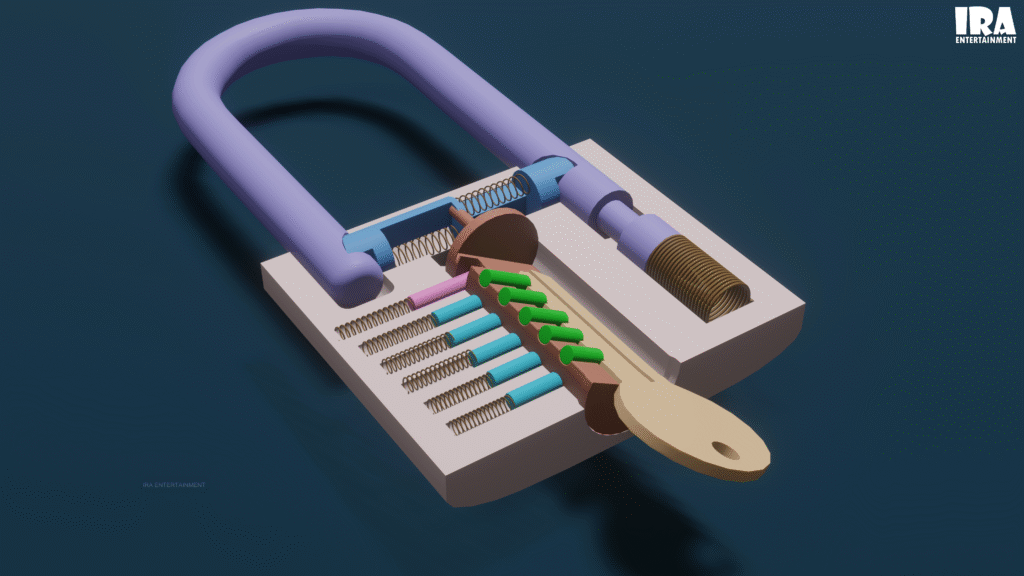
When no key is inserted, driver pins block the cylinder from rotating.
These driver pins sit partly in the plug and partly in the outer casing, physically preventing the plug from turning until they are lifted to the right height.When the correct key is inserted:
The key pins align perfectly.
Each notch on the key lifts its corresponding key pin to a precise height so the boundary between key pin and driver pin lines up with the shear line.The driver pins rise just above the shear line.
In practice the result is that the gap between each driver pin and key pin sits exactly at the shear line, which removes the mechanical lock between plug and shell.The plug can now rotate.
With all pin gaps aligned at the shear line the plug is free to turn, allowing the rest of the mechanism to operate.
- When no key is inserted, driver pins block the cylinder from rotating.
These driver pins sit partly in the plug and partly in the outer casing, physically preventing the plug from turning until they are lifted to the right height.
Some locks use steel balls or sidebar elements instead of traditional pins, but the principle is the same: only the right key lines up internal components so the plug can turn.
Modern locks often add security pins (serrated or spool pins), false gates, or anti-drill/anti-bump features to make unauthorized manipulation far more difficult.
How It Works Inside a Door Lock?
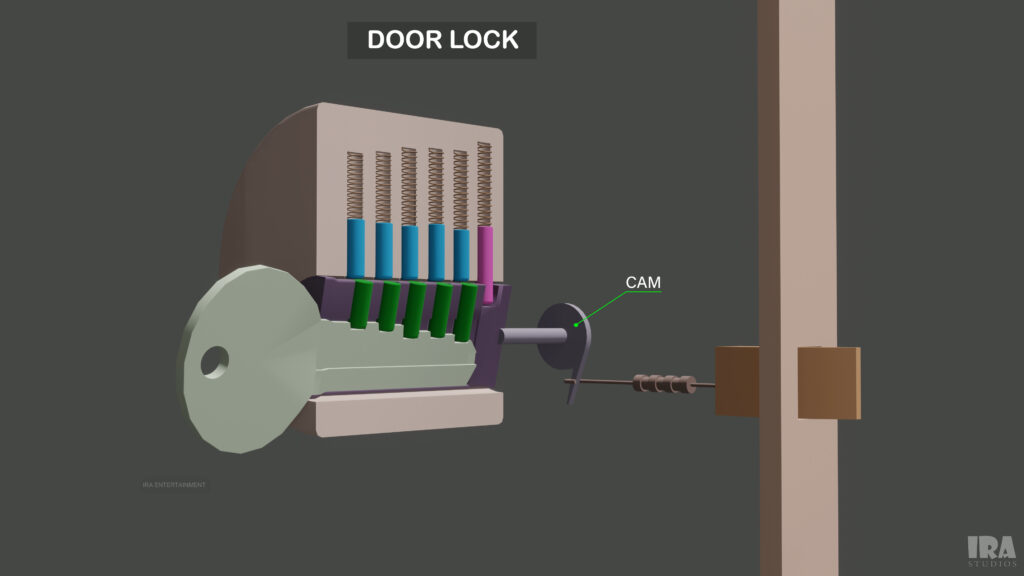
When you insert the key into a door lock, a fascinating mechanical process begins. Here’s what happens step by step:
- The plug rotates. The key fits perfectly into the plug, the central cylinder of the lock. As the key turns, it starts to rotate the plug, but this rotation is initially resisted by the pins inside the lock.
Pins align at the shear line. Inside the lock, pairs of pins—known as driver pins and key pins—rest at different lengths. When the correct key is inserted, the notches on the key lift each pin to exactly the right height so that the gap between the driver and key pins aligns perfectly with the shear line, allowing the plug to turn freely. This alignment is the heart of the pin tumbler system and is what makes the lock secure.
A cam system at the back of the plug engages. As the plug rotates, it interacts with a cam or tailpiece at the back of the lock. This cam translates the rotational movement of the plug into mechanical action that moves the bolt or latch.
The lock is released and the door opens. Once the bolt retracts, the door can swing open. Every part of this process happens in a fraction of a second, yet it is the result of carefully engineered mechanical design.
From the earliest wooden pin locks of ancient Egypt to the modern pin tumbler systems we use today, locks have come a long way, evolving from simple mechanical devices to highly sophisticated security solutions. Modern locking systems now combine traditional pin tumbler mechanisms with electronic innovations—such as smart locks, biometric access, and keyless entry—offering convenience, enhanced security, and real-time monitoring. Looking ahead, the future of locks promises even more advanced technologies, including AI-powered access control, digital encryption, and connected home integration, which will further protect our homes, offices, and personal belongings. Understanding the evolution of locks not only gives us an appreciation for centuries of mechanical ingenuity but also shows how innovation continues to shape the way we secure our world.
Here’s my 3D explanation that shows exactly how these lock systems work, with clear visuals and cross-sectional views.
Want to learn more through visual storytelling? Check out our detailed 3D explanation blog on Treadwheel Crane: Ancient Engineering Marvel Explained with 3D Visuals
Useful Link